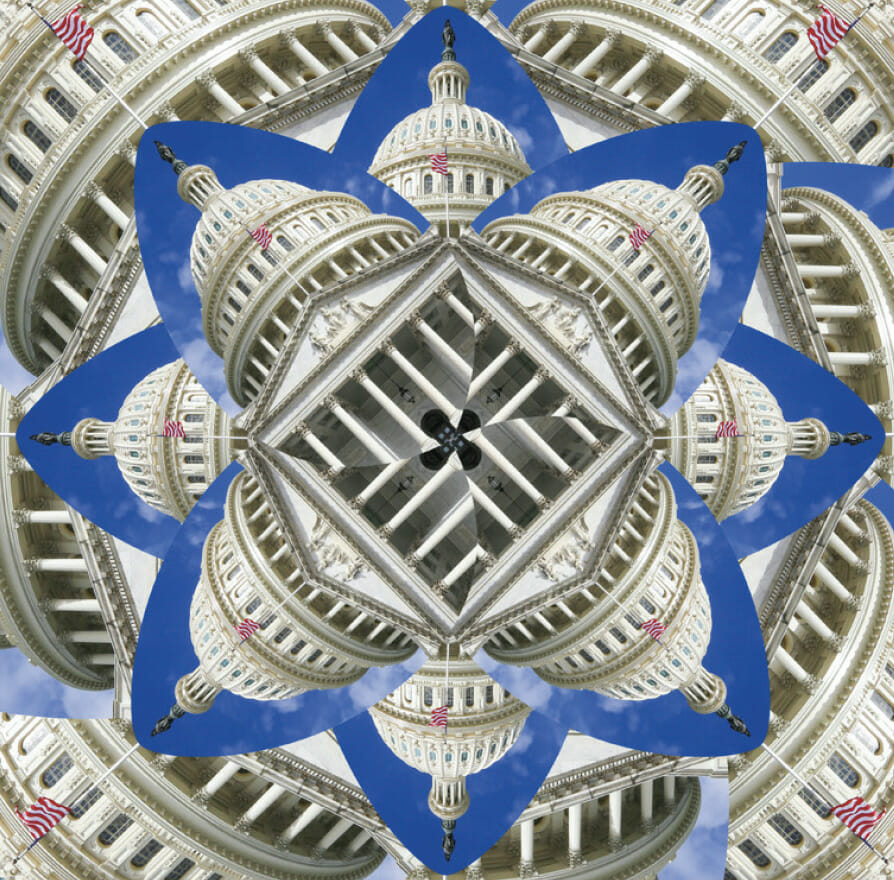Letter from the Editor
Democracy is a Design Problem

By Dana Chisnell, Civic and Policy Designer & Board Member, CoDesign Collaborative
I didn’t grow up expecting to work in government, especially in the U.S. federal government. Working in government was for other people. I don’t know who I thought those people were, but I didn’t know any of them. But here I am, now in my twentieth-something year of working with and in government.
Here’s where my story starts: there I was, minding my own business, watching the presidential election returns come back from Florida in 2000. I saw news reports of people leaving the polling place saying that they thought they voted for someone they didn’t intend to. And I thought, that’s a design problem. I wonder how elections get done? At first, it was a hobby. I am a design researcher, so learning what goes into the administration of elections was just a way to follow my curiosity. Soon I found myself on a citizens’ advisory committee in the county where I lived. Then I was lucky to work on some seminal research projects that contributed to ballot design, ballot instructions, and voting system standards. And then one day in 2013, my brilliant, occasional research partner and I formed the Center for Civic Design, a non-profit organization dedicated to ensuring that voters can vote the way they intend, by design. Our tagline, “democracy is a design problem,” says everything about this issue of Design Museum Magazine.
To say that I am excited about this government-themed issue is a bit of an understatement. After my hobbyist beginnings, I’ve become kind of a civic design nerd. My hope is that, when you read these articles by people who are among some of the most design-progressive folks working in policy, tech, media, and political science, that you feel the same optimism that I do. Yes, it often feels like the world is falling apart, but here is proof that there are good people doing good, human-centered work, and it’s making a positive difference in the lives of regular people every day.
Government is irreplaceable. It should also be available, accessible, and should serve the public by meeting people where they are. A constant challenge is the gap between the people who are making policy and the people who are most affected by government policies. Cecilia Muñoz and Nikki Zeichner give us their brilliant insights about when policymakers connect ideas with real outcomes for real people (or don’t). One way to close that gap, according to Angelica Quicksey and Chris Meierling, is through prototyping policy as a way to explore implementing programs before they roll out at scale.
Government works best when it is held accountable. That accountability shows up in a number of ways. In this issue, we have a riveting conversation between Lauren Mattioli and Cyd Harrell about how court systems (in all the meanings of “system”) are designed, including deeply rooted and problematic racism, classism, and sexism. And, from the point of view of the public and actions that regular people can take every day, we’ll hear in another conversation between Baratunde Thurston and Claire-Solène Bečka about how design intersects with the ideas he brings to his inspiring podcast, How to Citizen. (I personally love the idea of “citizen” as a verb.) Claire-Solène brings us more intersectionality with her profile with Dana Tai Soon Burgess of dance diplomacy, where the ideas of identity and history come together to connect culture and belonging as a device of statecraft.
But design in government is different from design in the private sector. Anne Petersen brings that alive with a simple assertion: Government is designed. We can design it better. Designing government better and designing a better government includes engaging communities as we design public services, to, as Ayana Pressley says, bring people in the most pain closest to the power. Candace Brooks explores the power dynamic in human-centered design in ways that will have you rethinking your own design practice and how to make it truly community-centered. Finally, I asked government designers about what makes their work both challenging and awesome. I came away with a few observations about the types of problems government designers work on and why solving them is so different from their private sector experience.
I hope when you read this issue that you feel empowered to make your own corner of the world a better place, by design. But mostly, I hope you find yourself ready to join the growing legion of user experience, product, service, transdisciplinary, curriculum, information, data visualization, policy, and other designers in your local, state, or federal government. Because democracy is a design problem.
